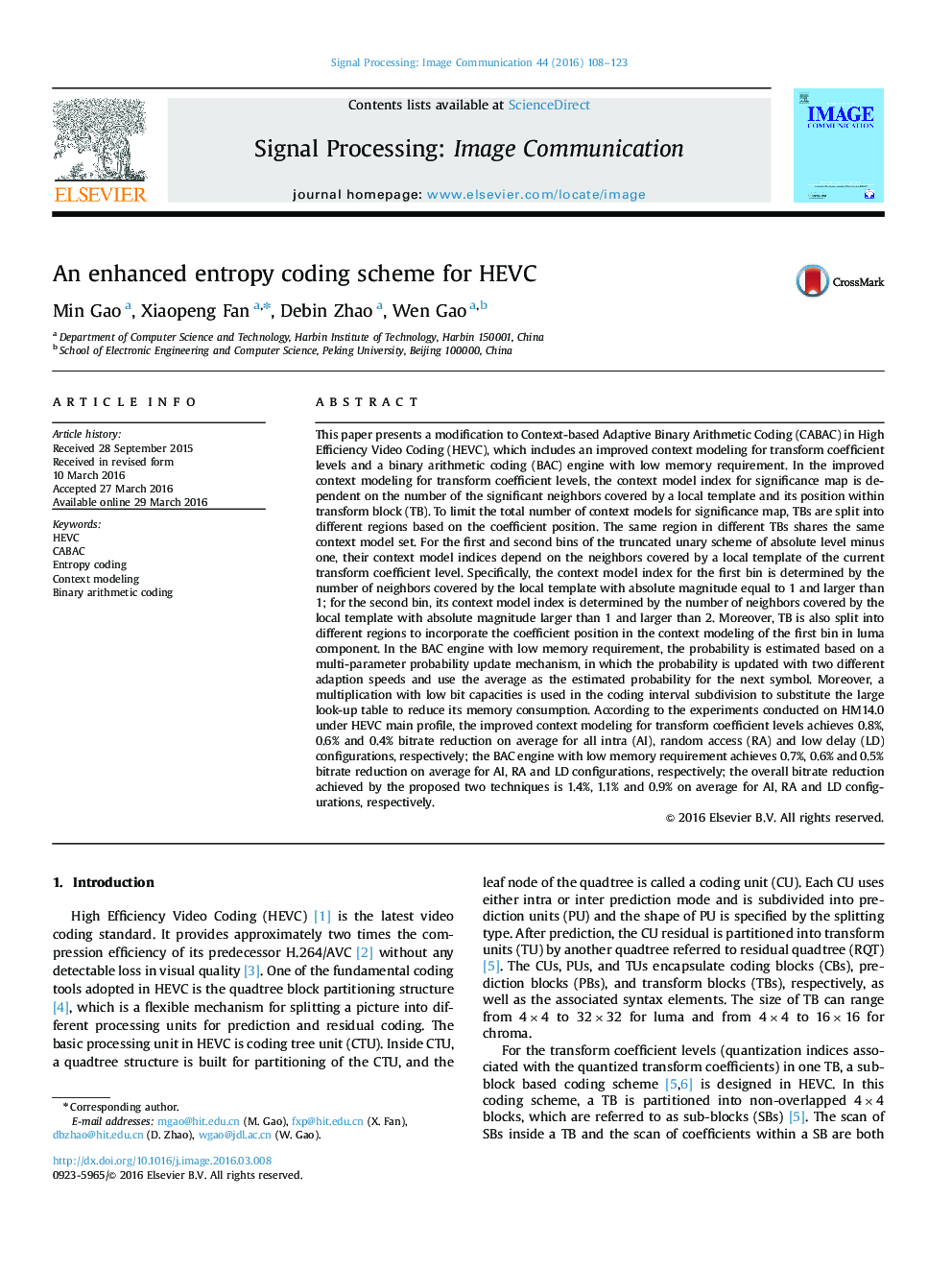| Article ID | Journal | Published Year | Pages | File Type |
|---|---|---|---|---|
| 537321 | Signal Processing: Image Communication | 2016 | 16 Pages |
•An improved context modeling is proposed for the transform coefficient levels.•The position and neighbors are used as the contexts of transform coefficient levels.•For significant map, the same region in different TBs shares one context model set.•For level information, the bins from previous scan pass are also used as contexts.•A binary arithmetic coding (BAC) with low memory requirement is proposed.•The multiplication with low bit capacity is used in the BAC to reduce memory cost.
This paper presents a modification to Context-based Adaptive Binary Arithmetic Coding (CABAC) in High Efficiency Video Coding (HEVC), which includes an improved context modeling for transform coefficient levels and a binary arithmetic coding (BAC) engine with low memory requirement. In the improved context modeling for transform coefficient levels, the context model index for significance map is dependent on the number of the significant neighbors covered by a local template and its position within transform block (TB). To limit the total number of context models for significance map, TBs are split into different regions based on the coefficient position. The same region in different TBs shares the same context model set. For the first and second bins of the truncated unary scheme of absolute level minus one, their context model indices depend on the neighbors covered by a local template of the current transform coefficient level. Specifically, the context model index for the first bin is determined by the number of neighbors covered by the local template with absolute magnitude equal to 1 and larger than 1; for the second bin, its context model index is determined by the number of neighbors covered by the local template with absolute magnitude larger than 1 and larger than 2. Moreover, TB is also split into different regions to incorporate the coefficient position in the context modeling of the first bin in luma component. In the BAC engine with low memory requirement, the probability is estimated based on a multi-parameter probability update mechanism, in which the probability is updated with two different adaption speeds and use the average as the estimated probability for the next symbol. Moreover, a multiplication with low bit capacities is used in the coding interval subdivision to substitute the large look-up table to reduce its memory consumption. According to the experiments conducted on HM14.0 under HEVC main profile, the improved context modeling for transform coefficient levels achieves 0.8%, 0.6% and 0.4% bitrate reduction on average for all intra (AI), random access (RA) and low delay (LD) configurations, respectively; the BAC engine with low memory requirement achieves 0.7%, 0.6% and 0.5% bitrate reduction on average for AI, RA and LD configurations, respectively; the overall bitrate reduction achieved by the proposed two techniques is 1.4%, 1.1% and 0.9% on average for AI, RA and LD configurations, respectively.
